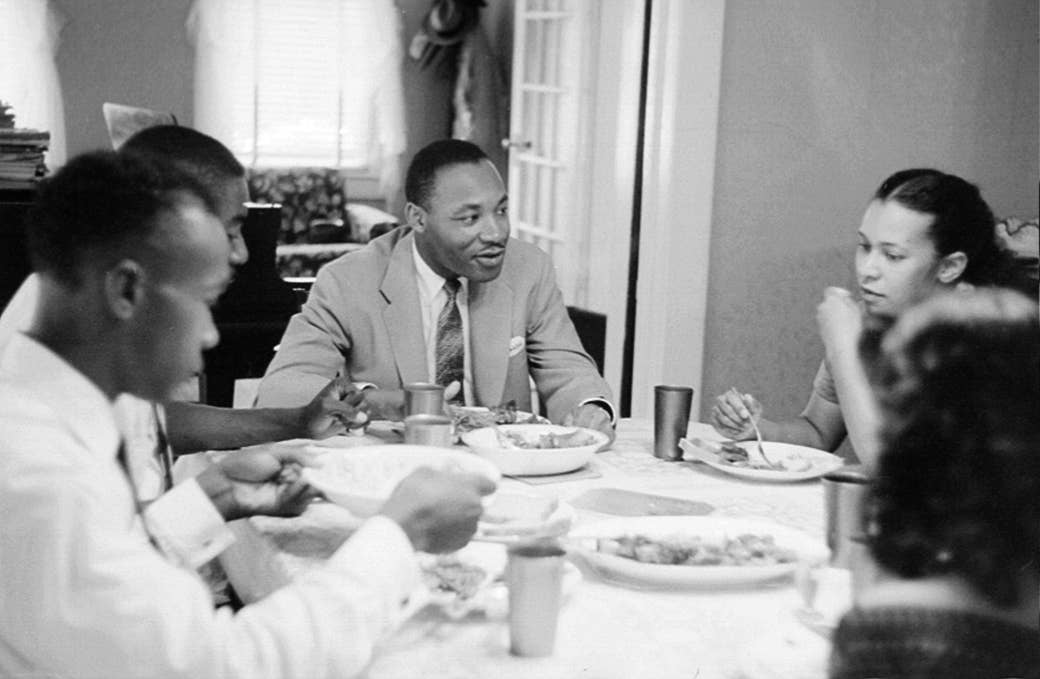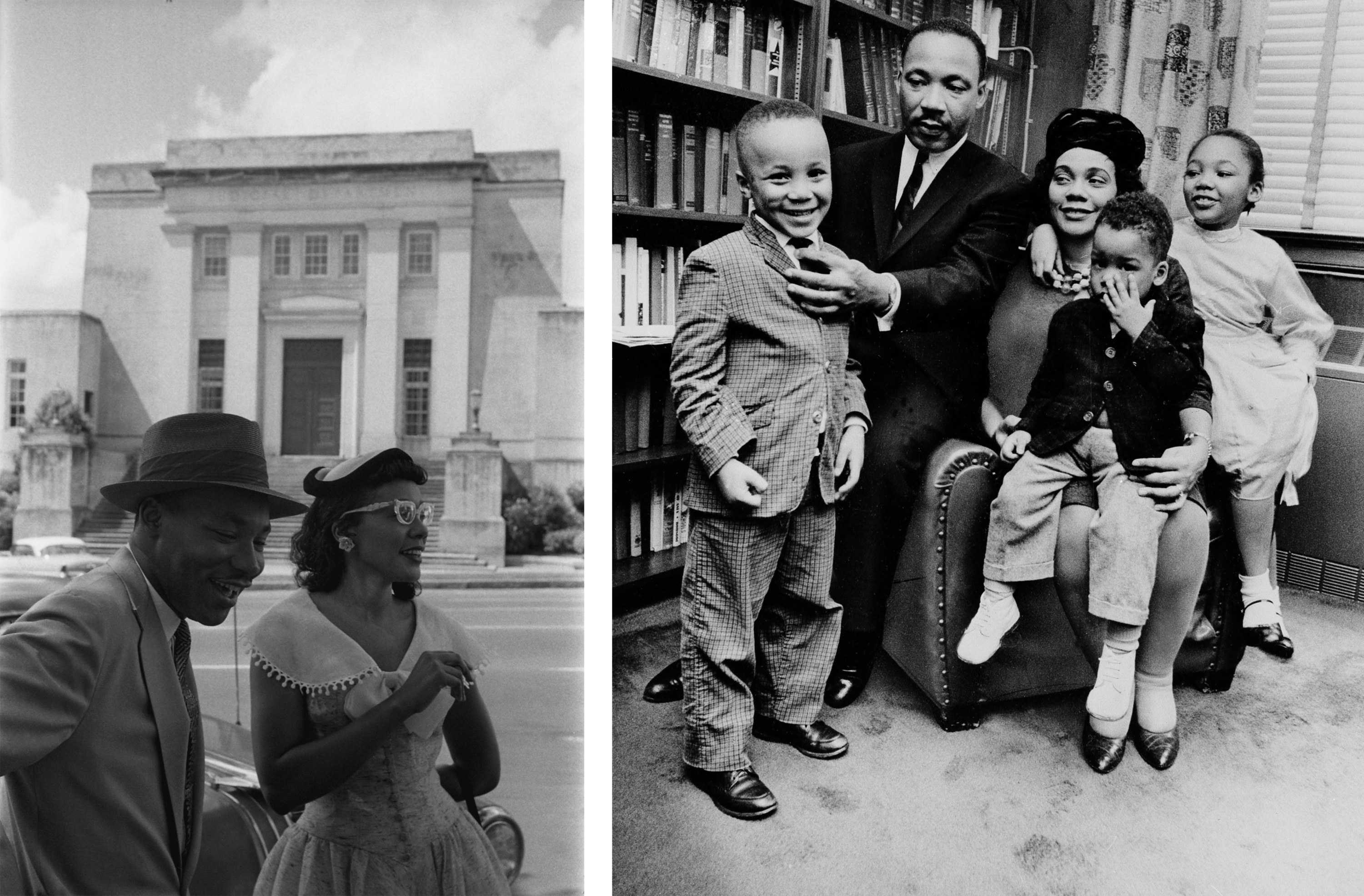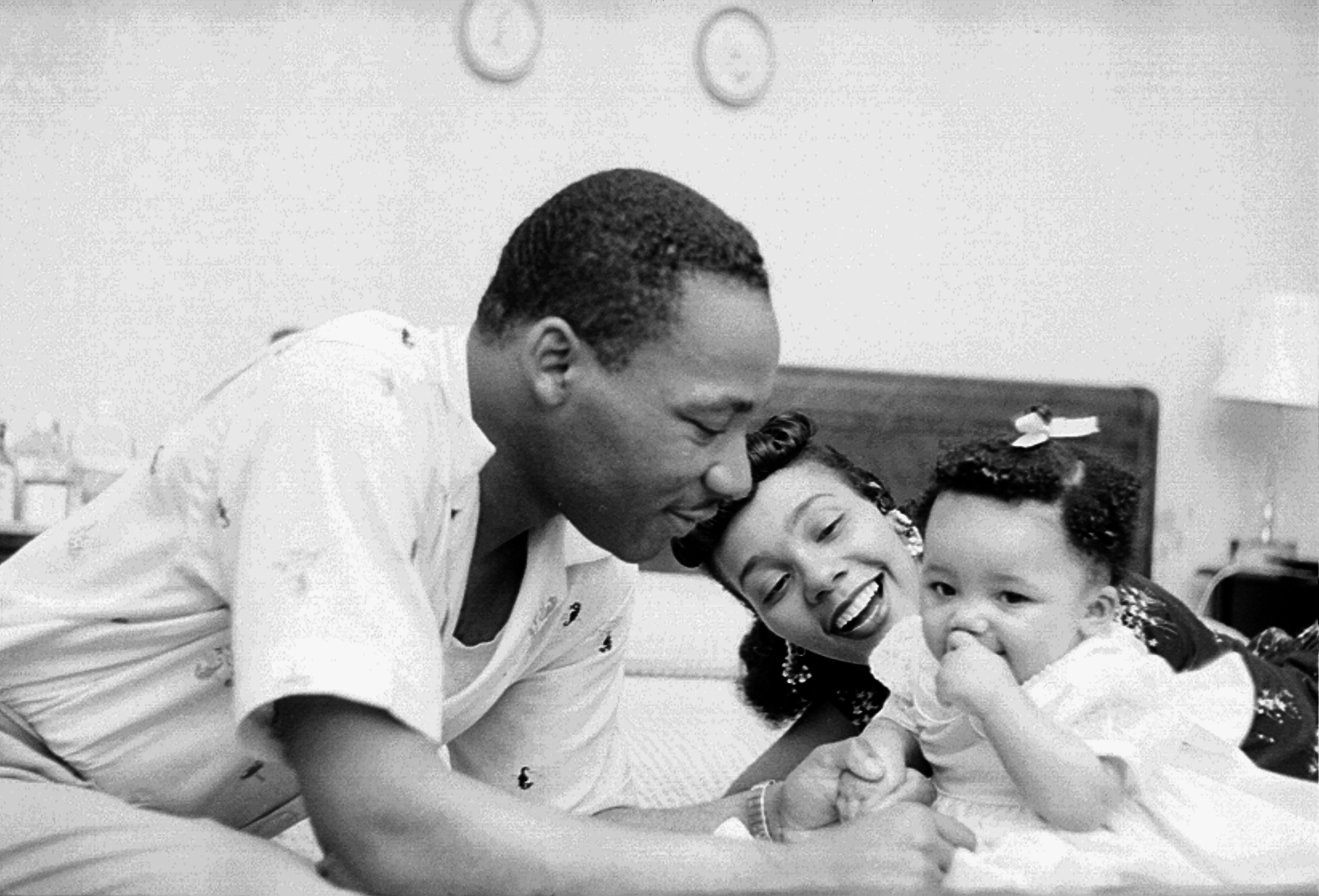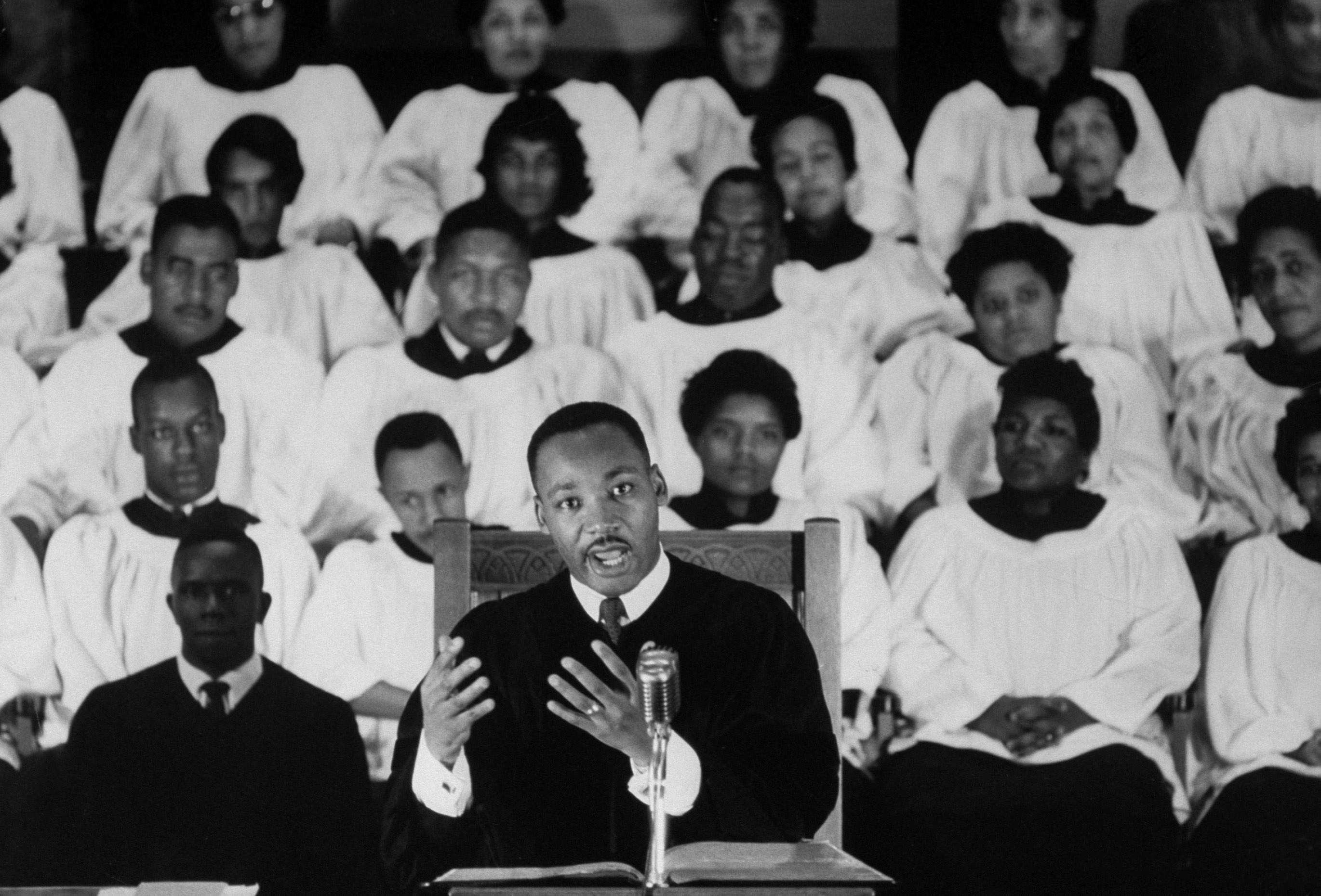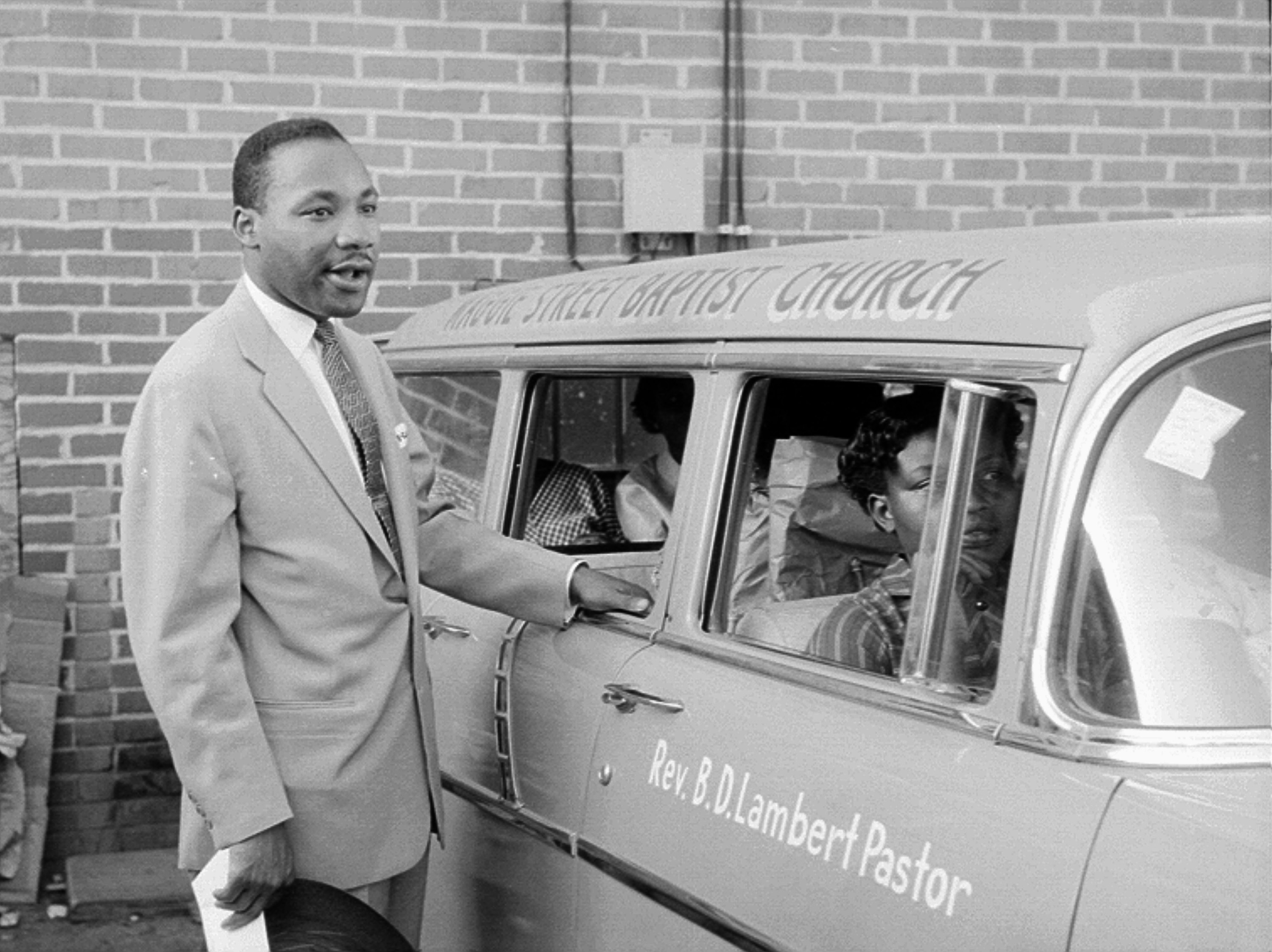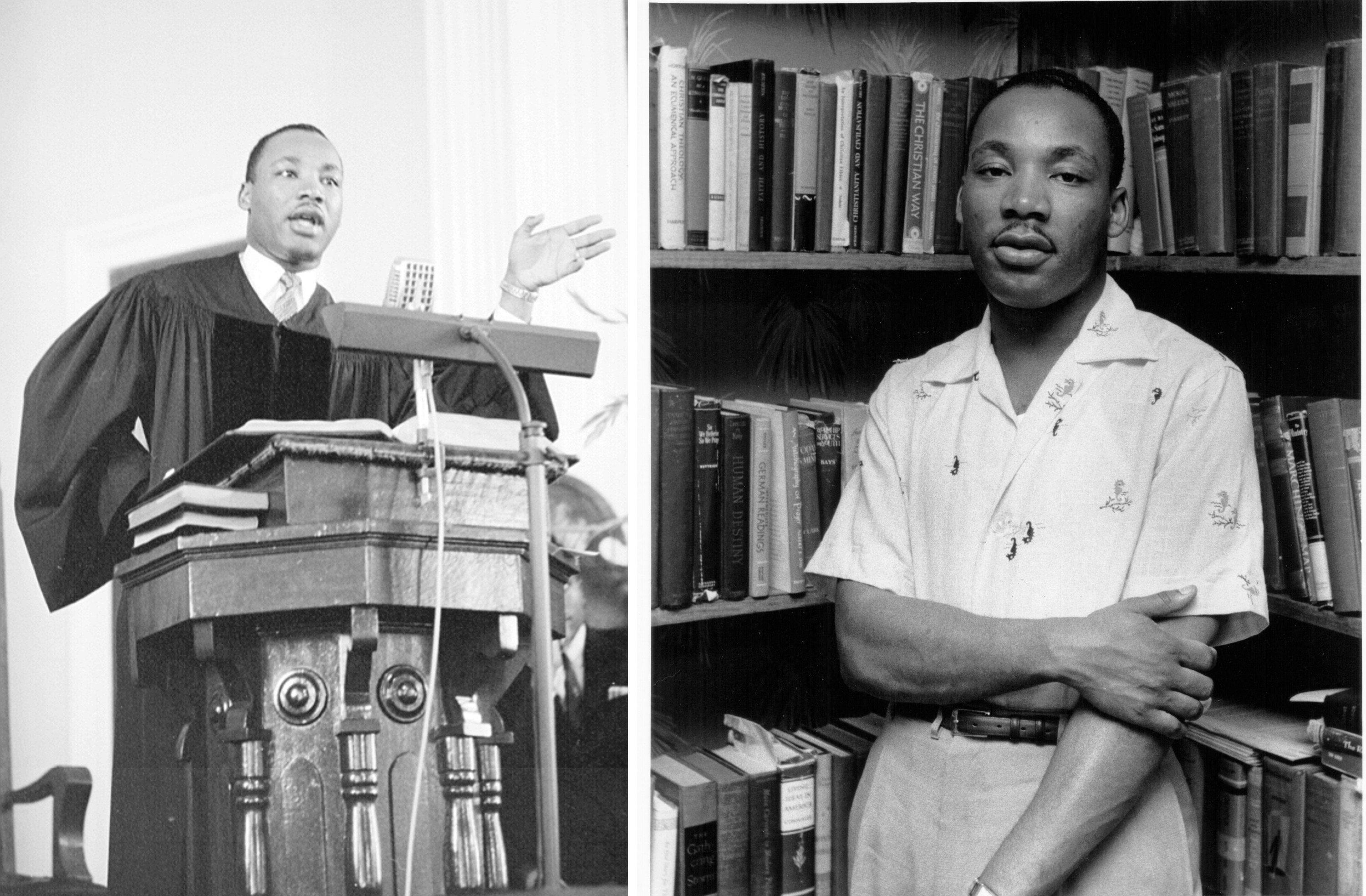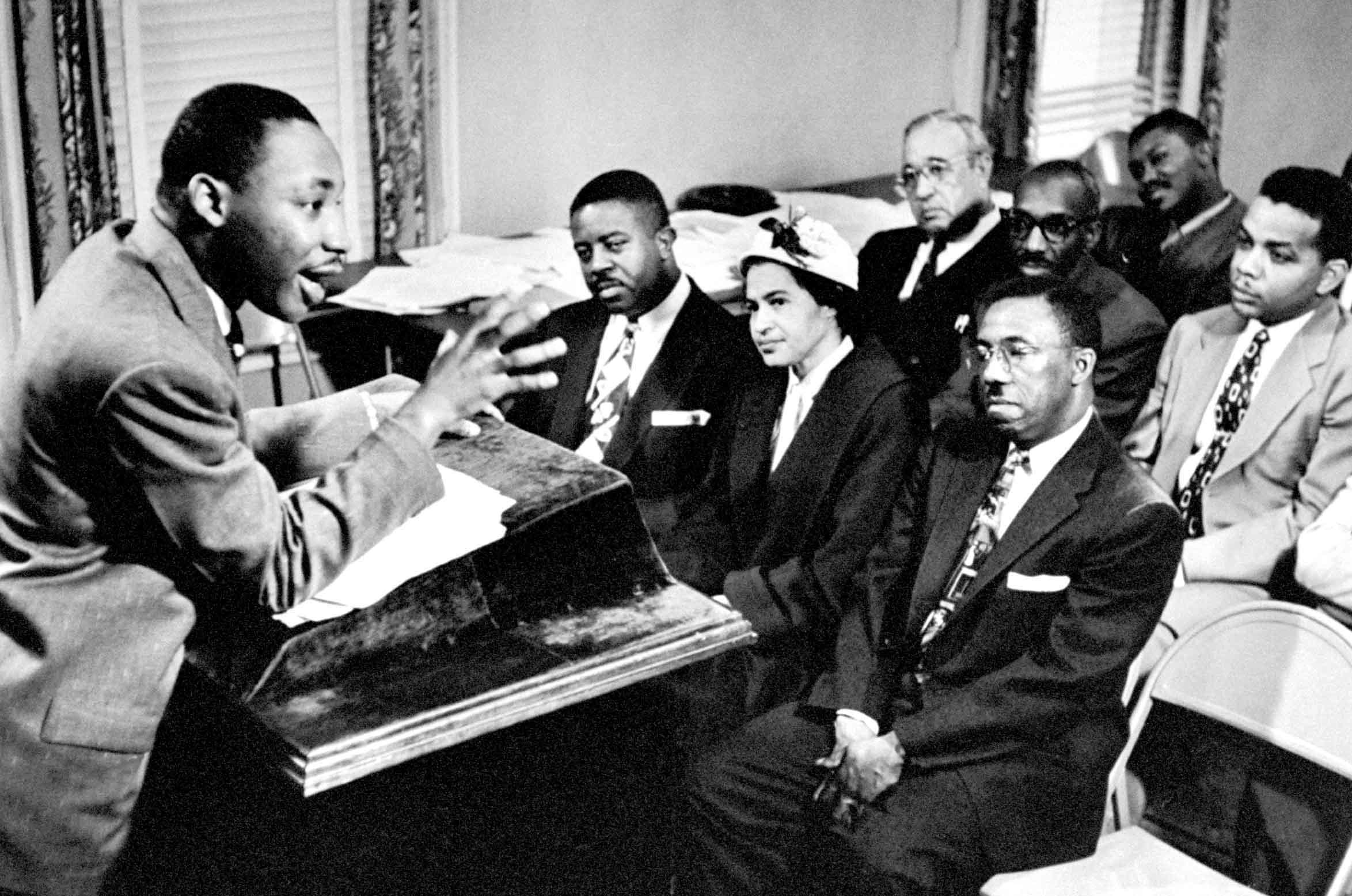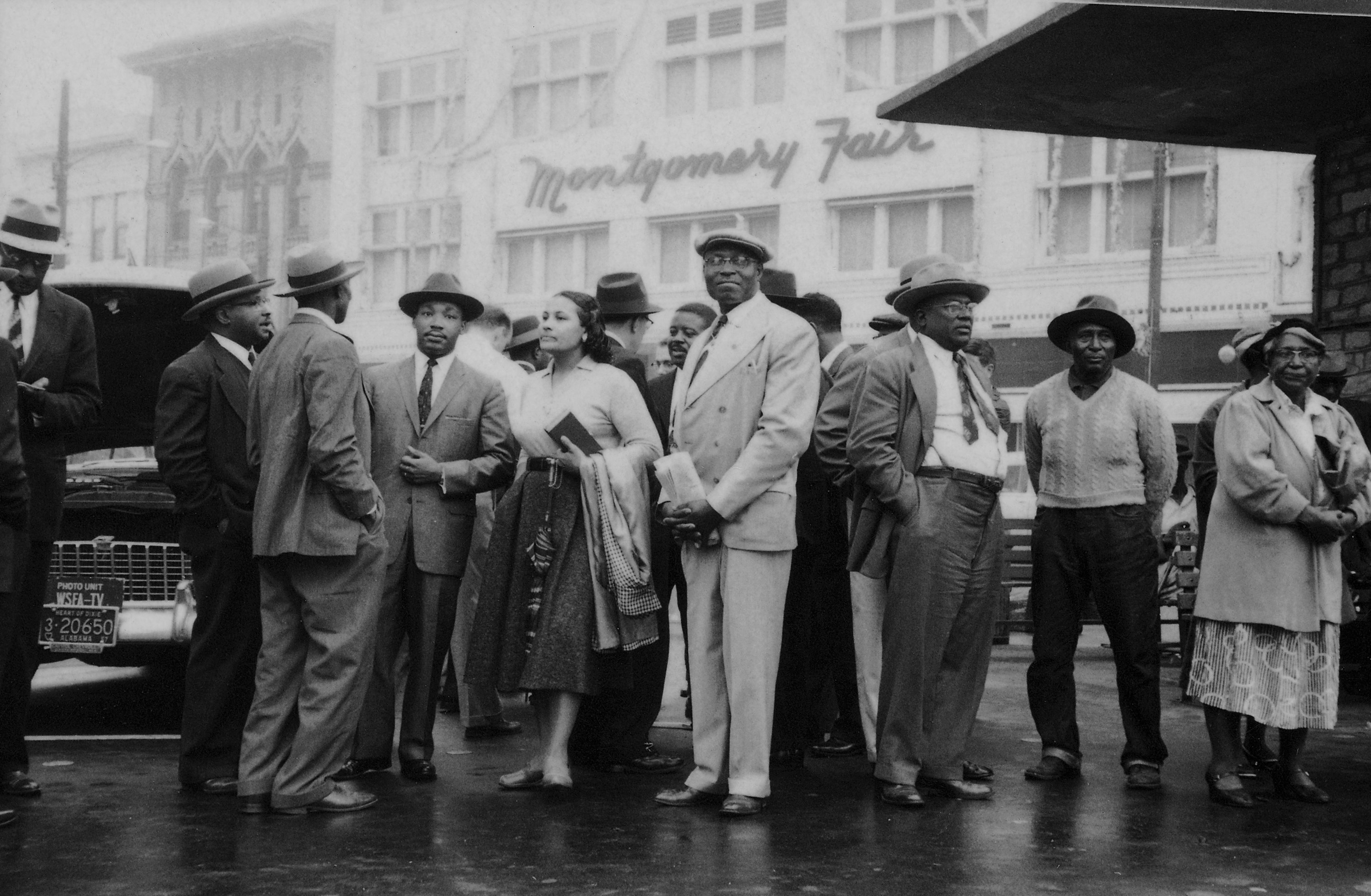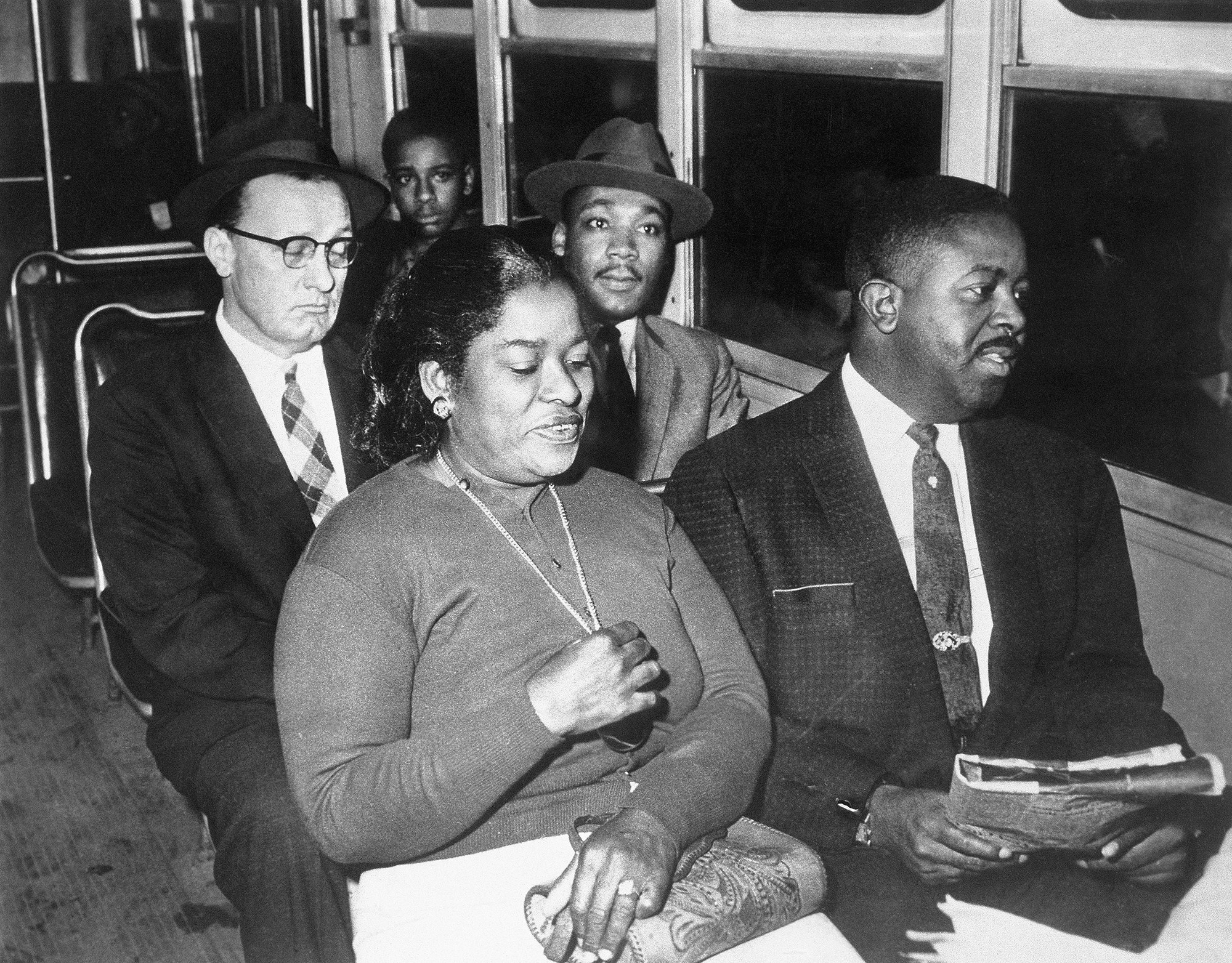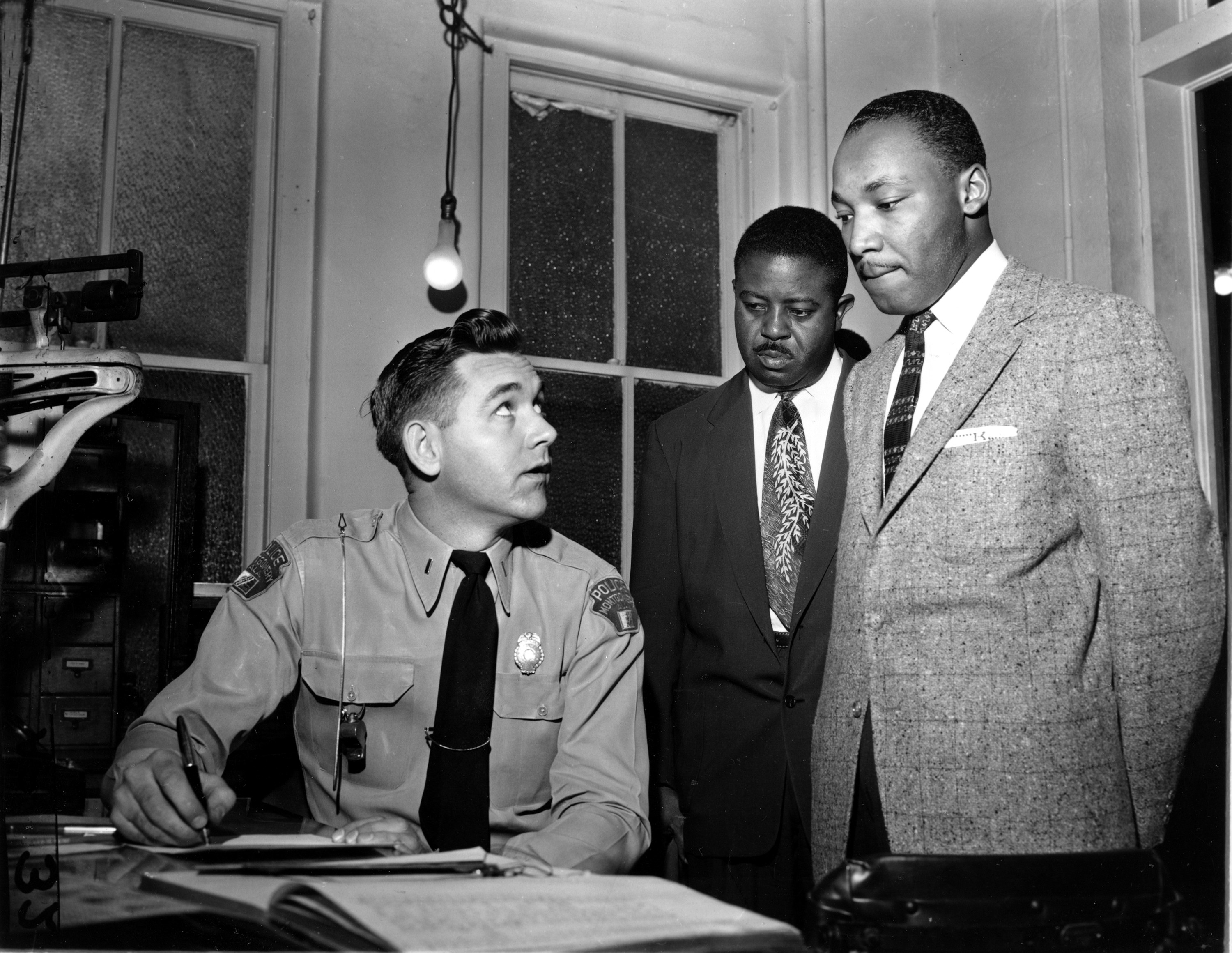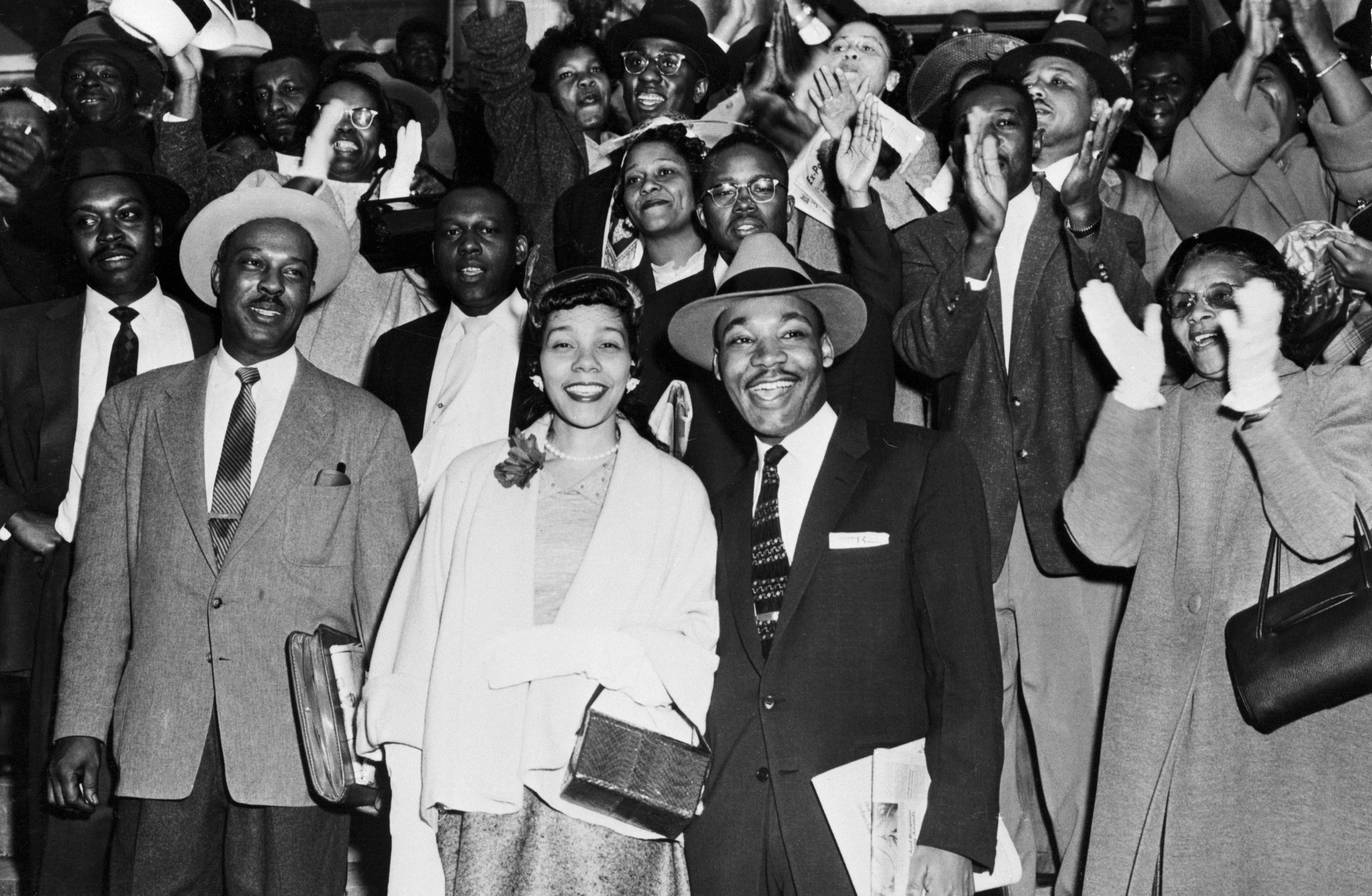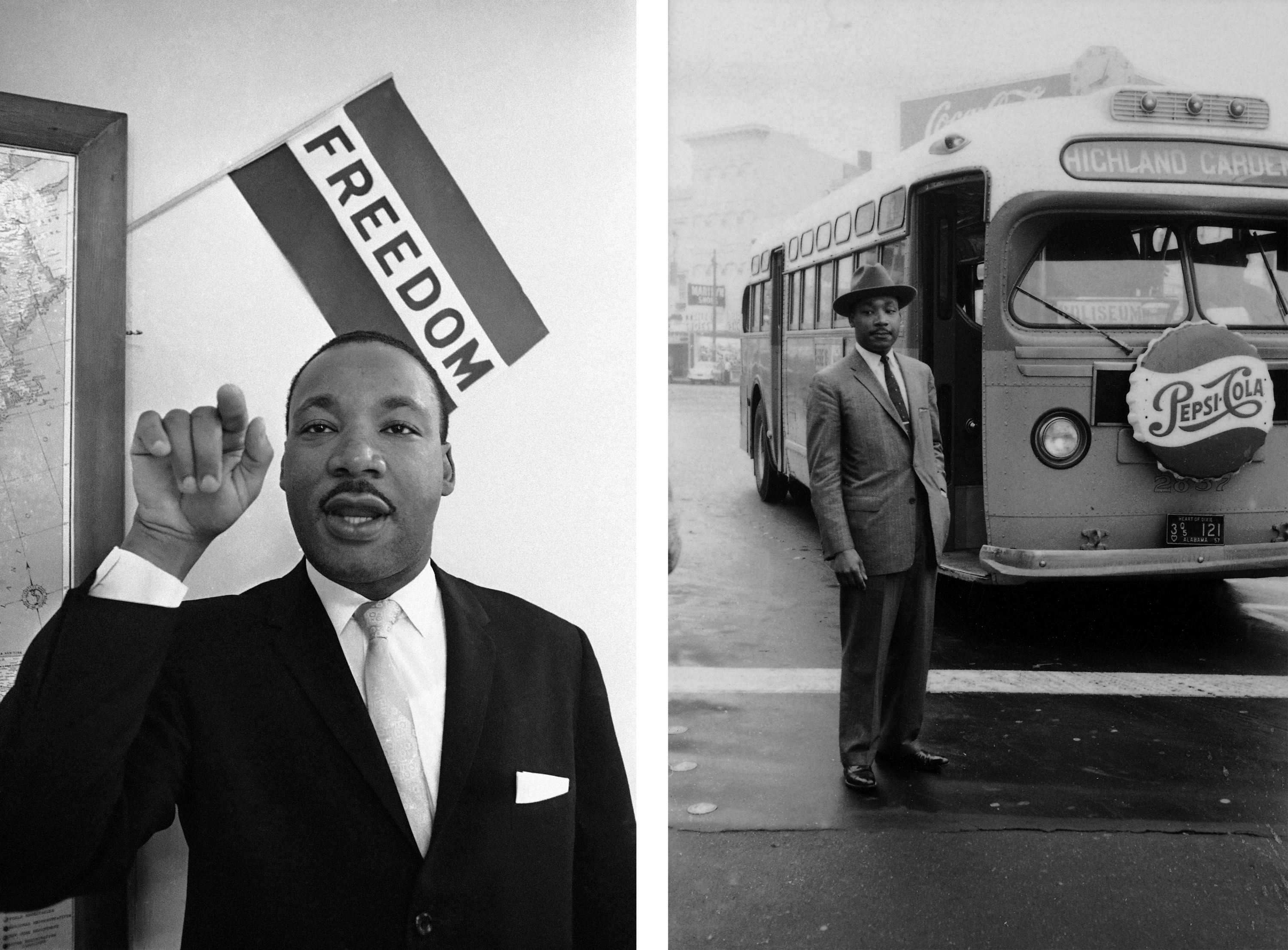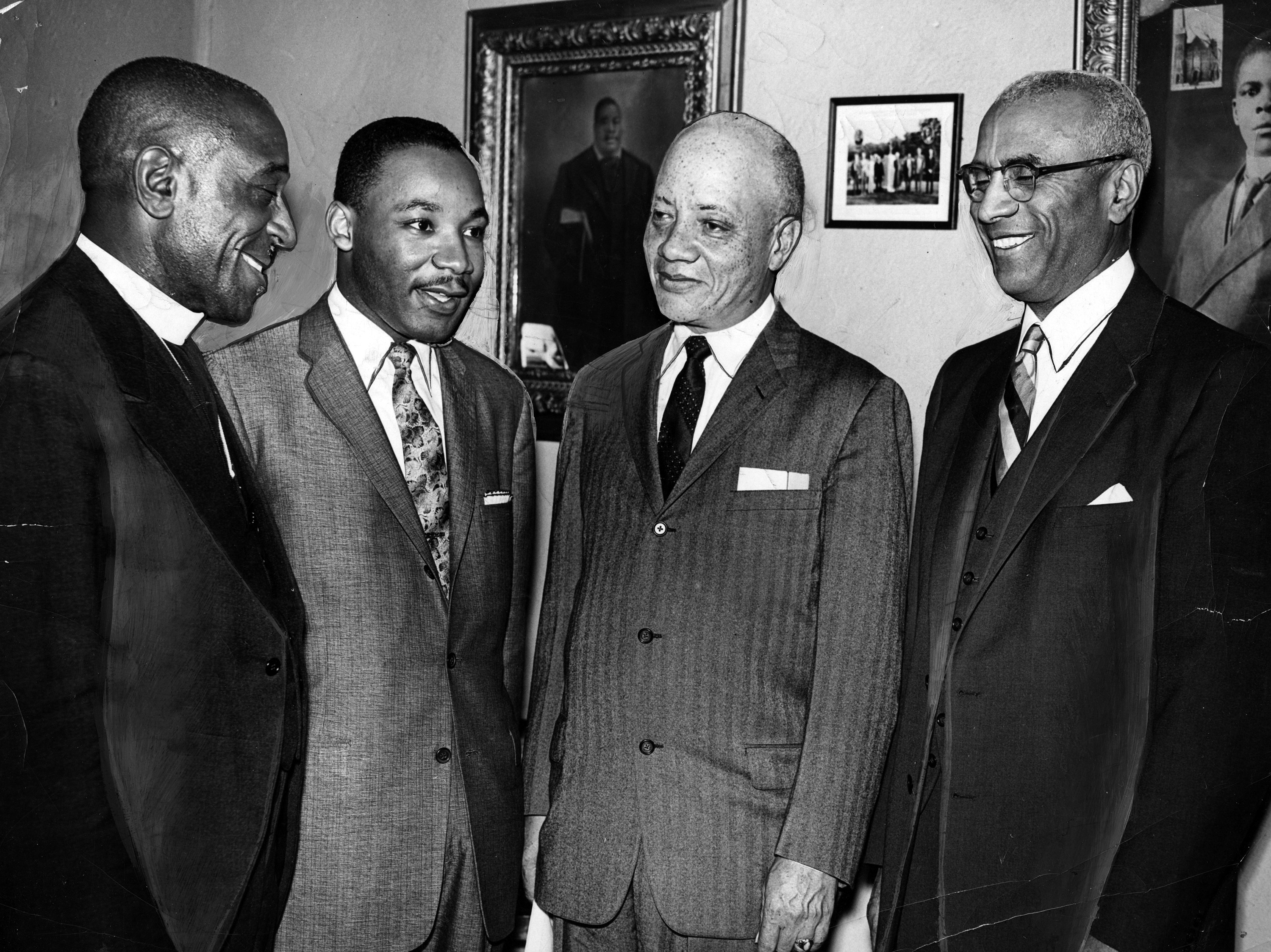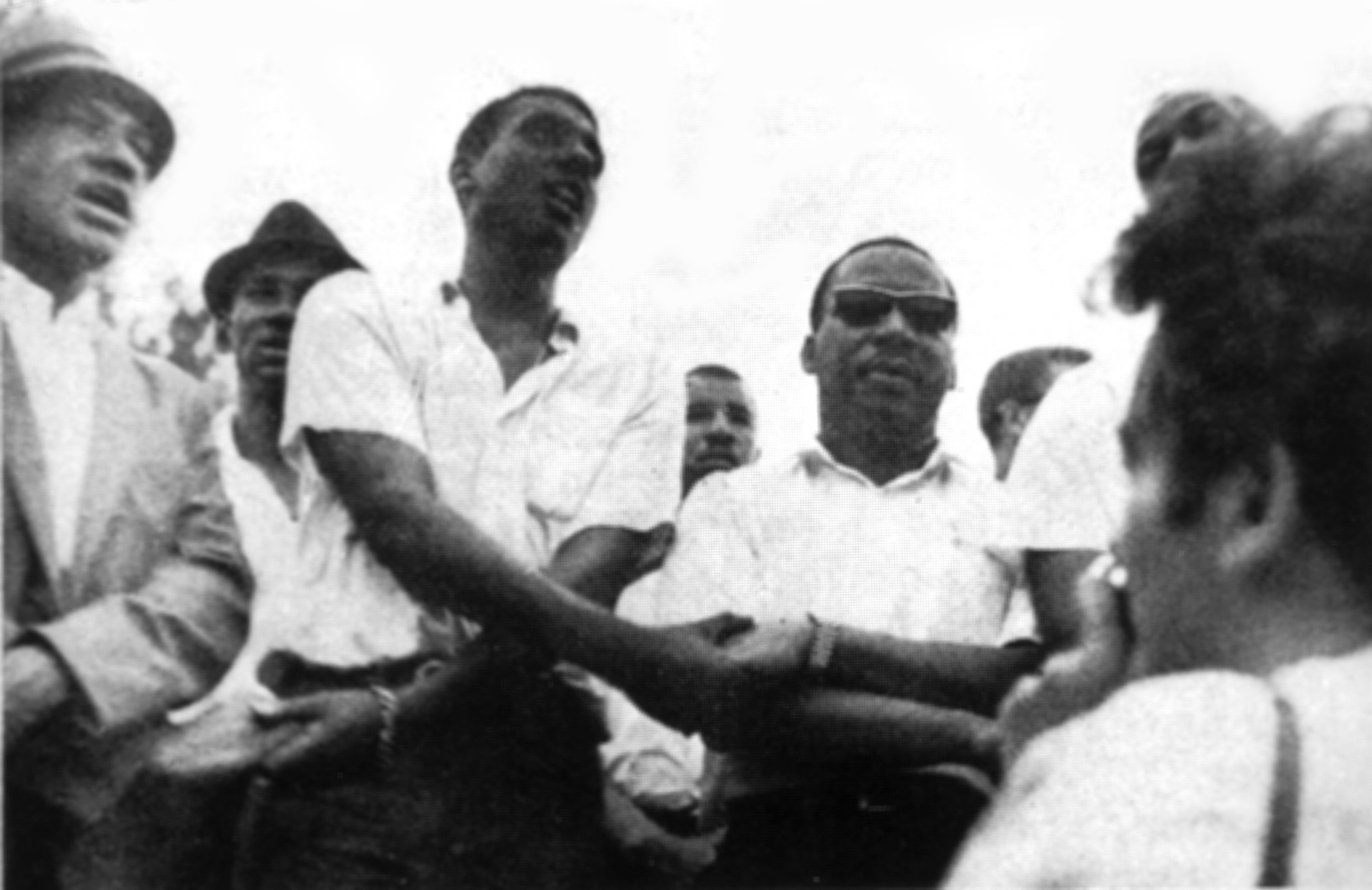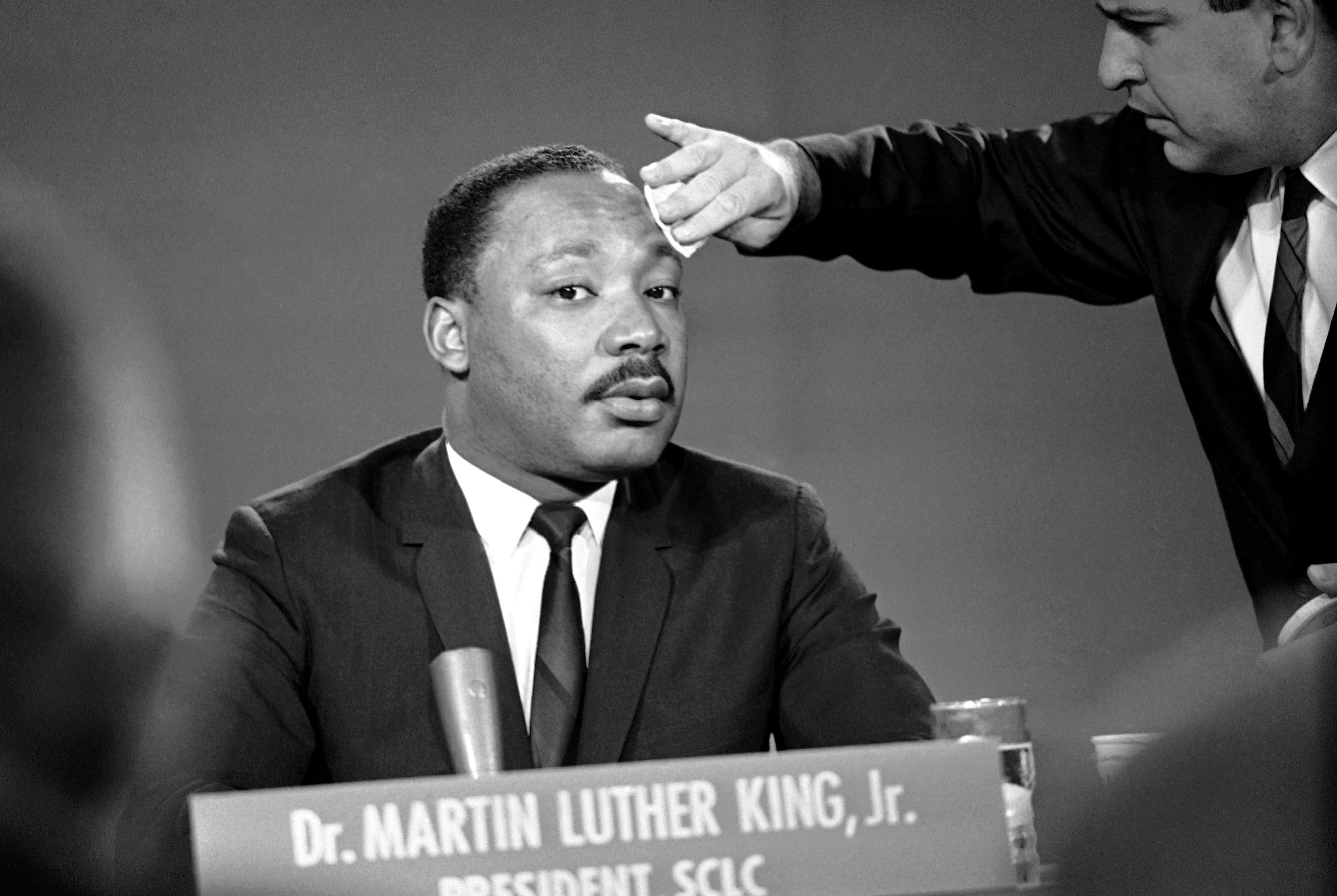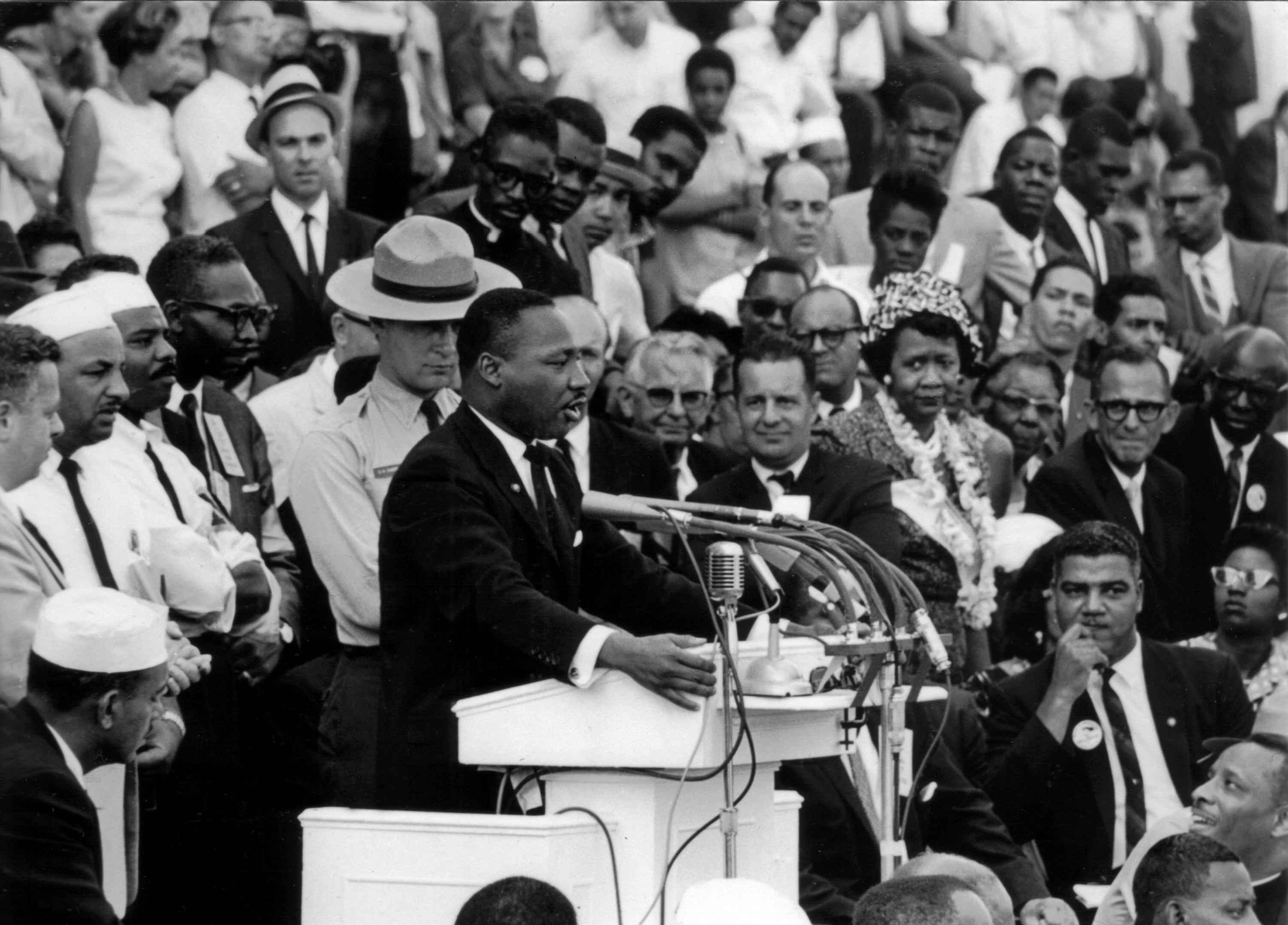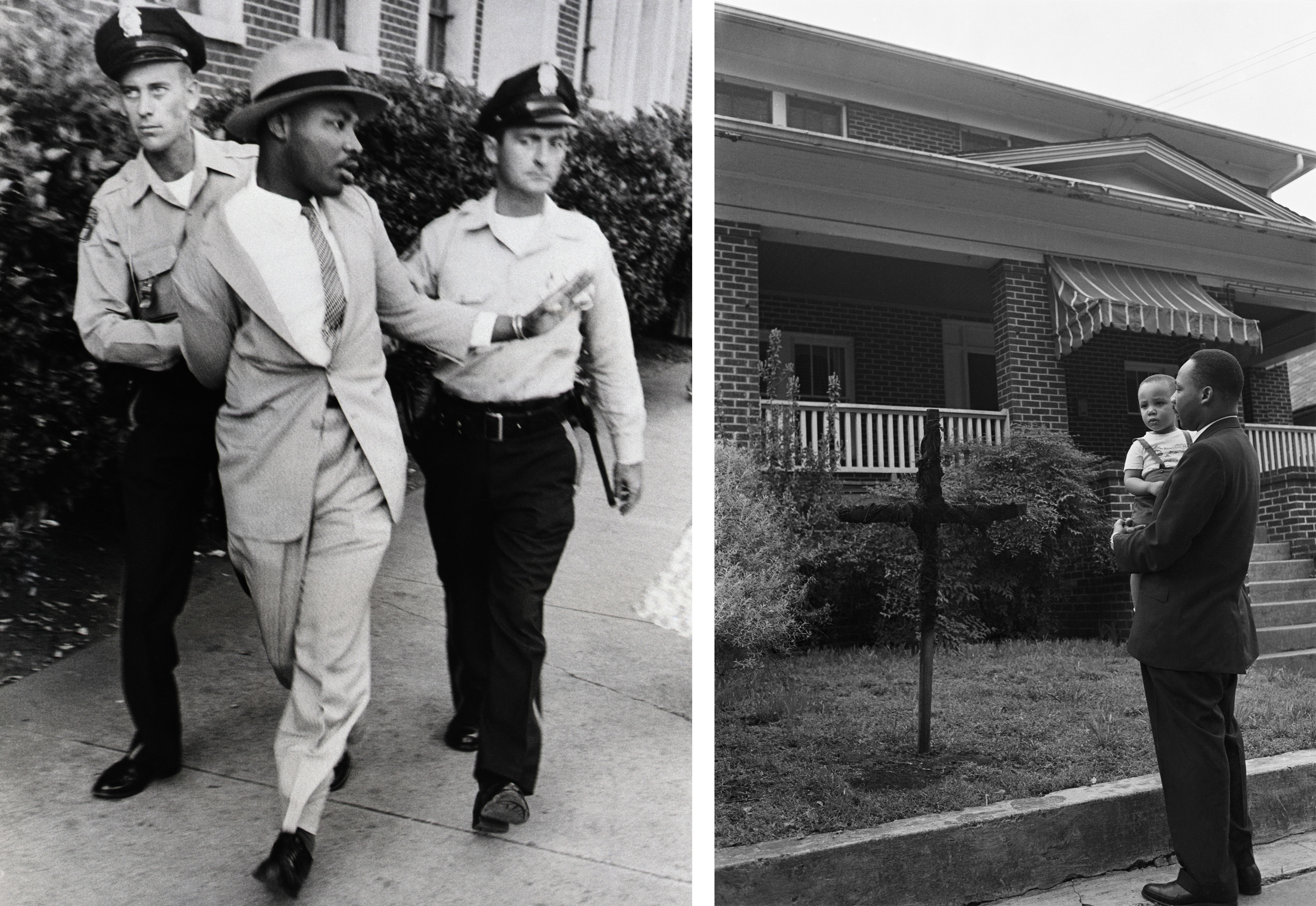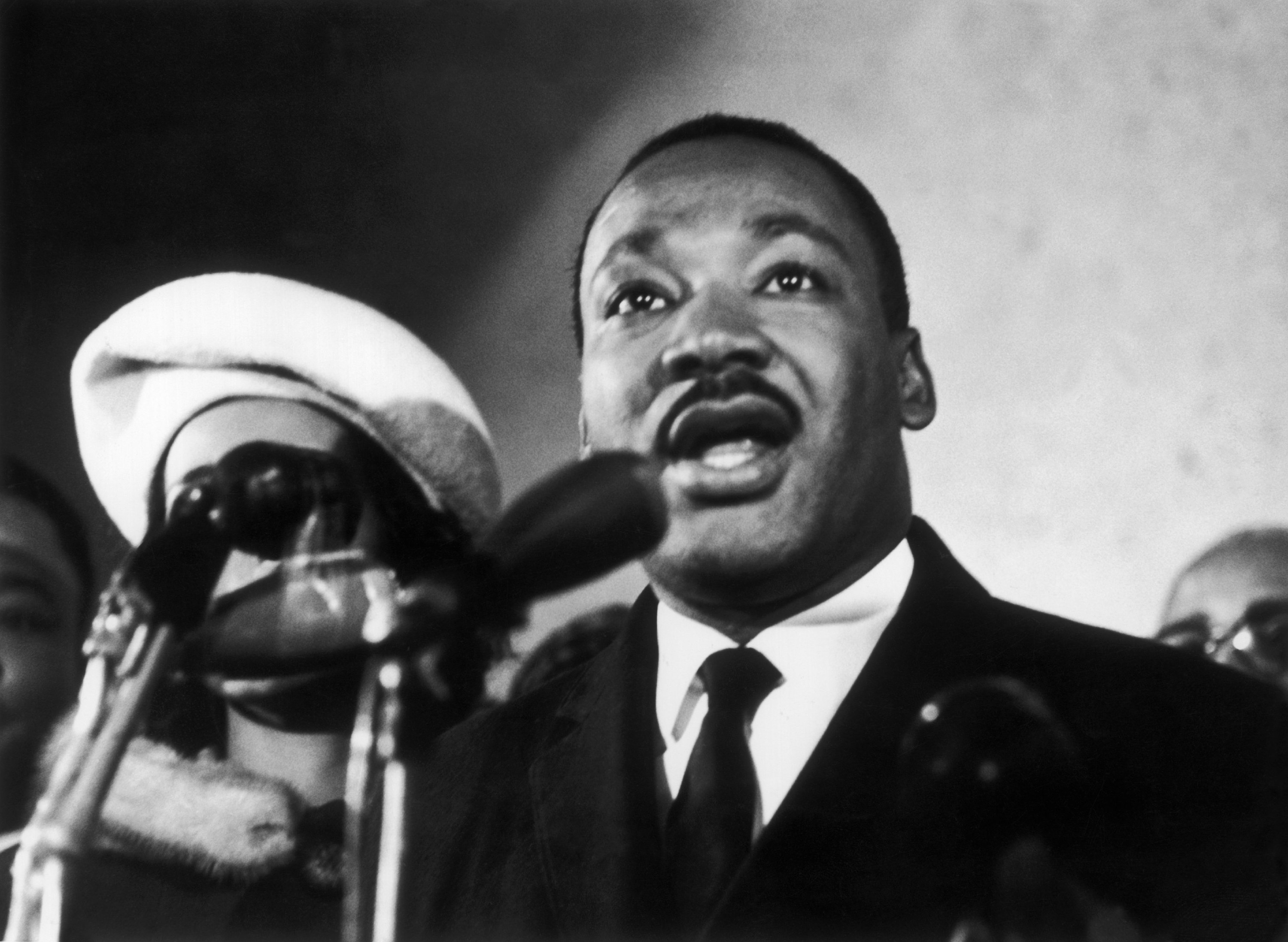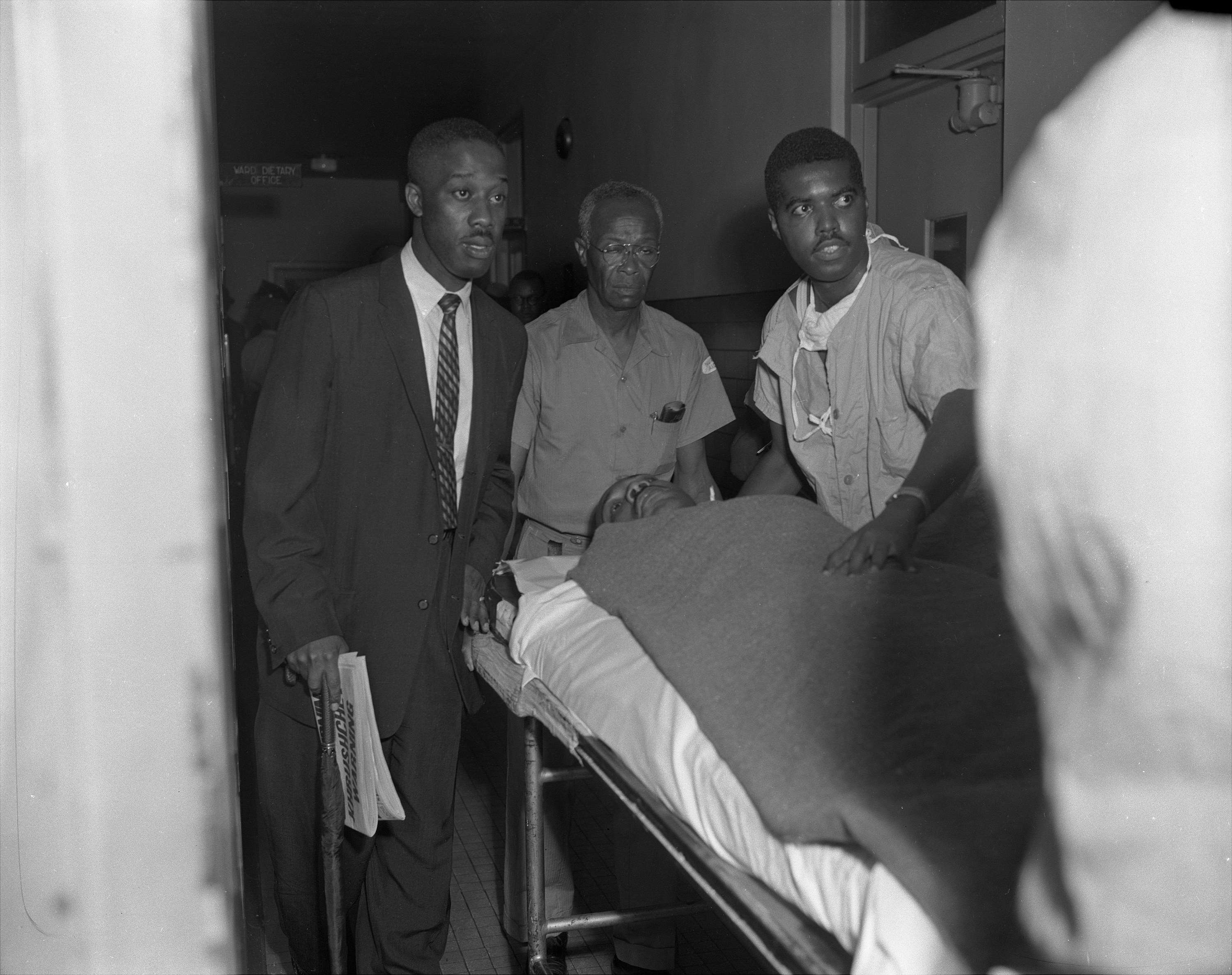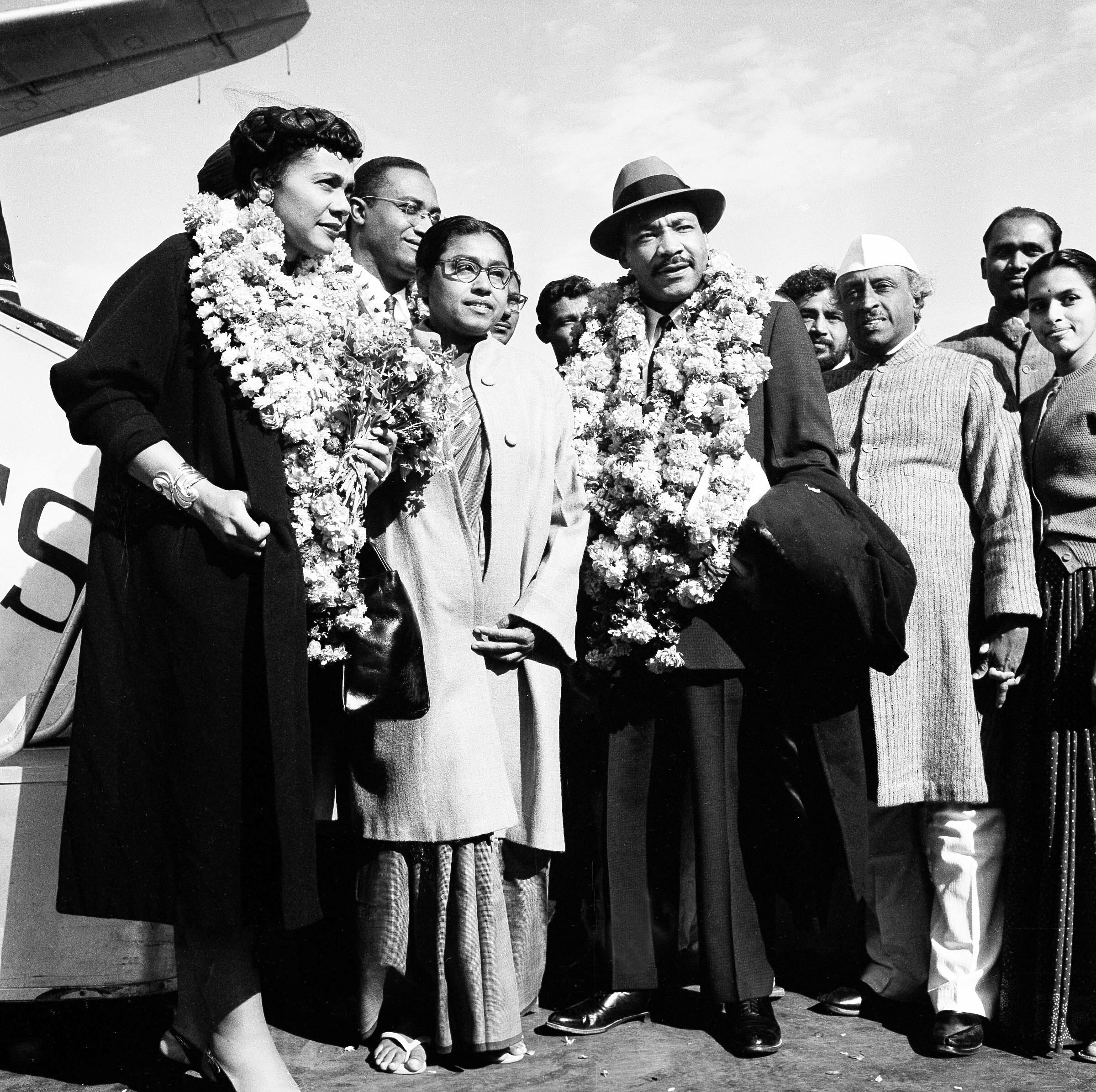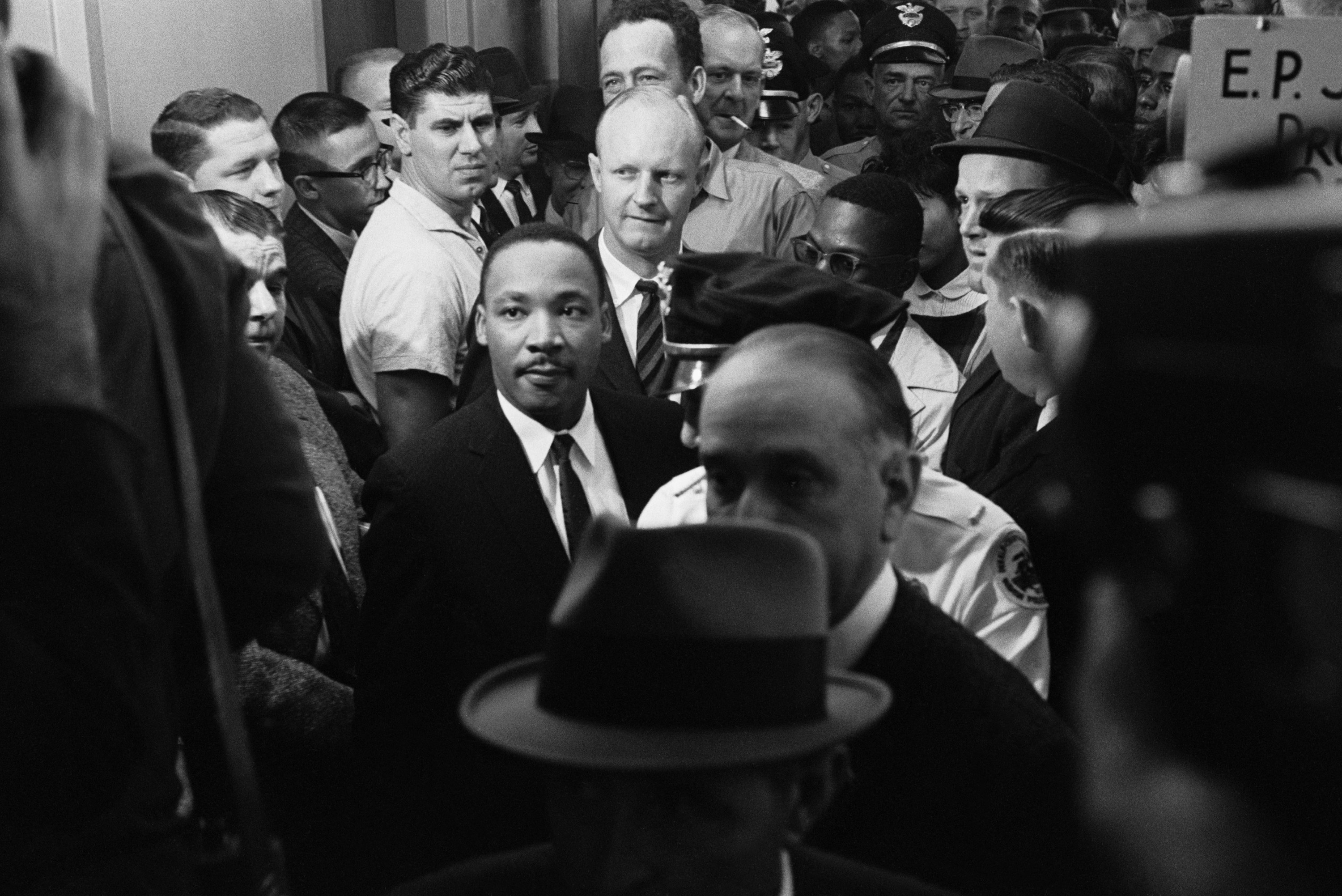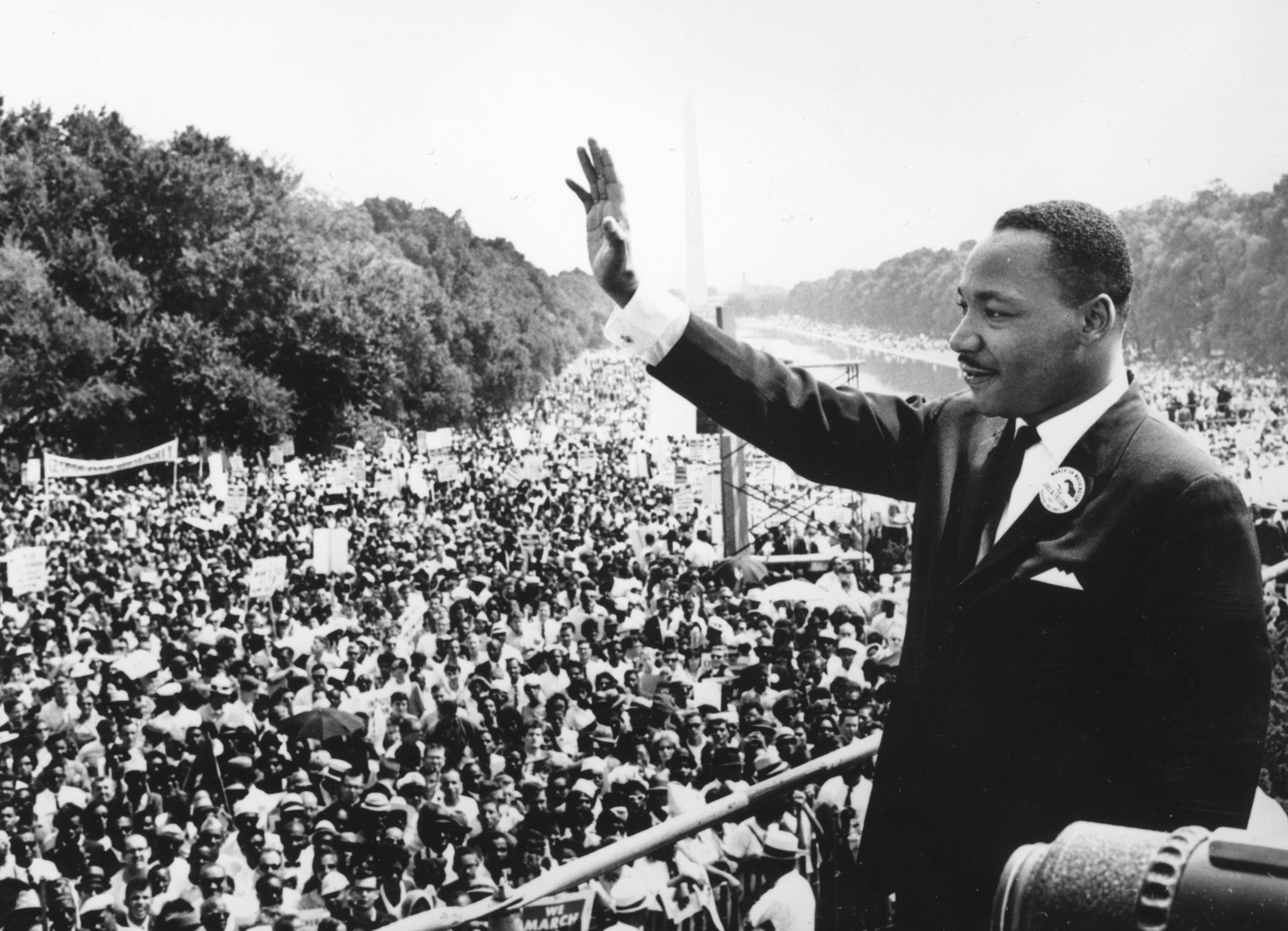This year, Martin Luther King Jr. would have been 93.
King began his career as a Baptist minister in the segregated American South. He rose to national prominence after leading the Montgomery Bus Boycott in 1955, which was organized with other activists who went on to found the Southern Christian Leadership Conference in 1957. His civil rights activism was shaped by his Christian beliefs — he earned his doctorate in systemic theology — and the teachings of Indian activist Mahatma Gandhi, who advocated for nonviolence and civil disobedience. When King was assassinated in 1968, Americans mourned him deeply. The annual holiday commemorating his birthday began in 1986.
We're looking back at early photos of King’s life with his family, his congregation, and other leaders in the civil rights movement.
